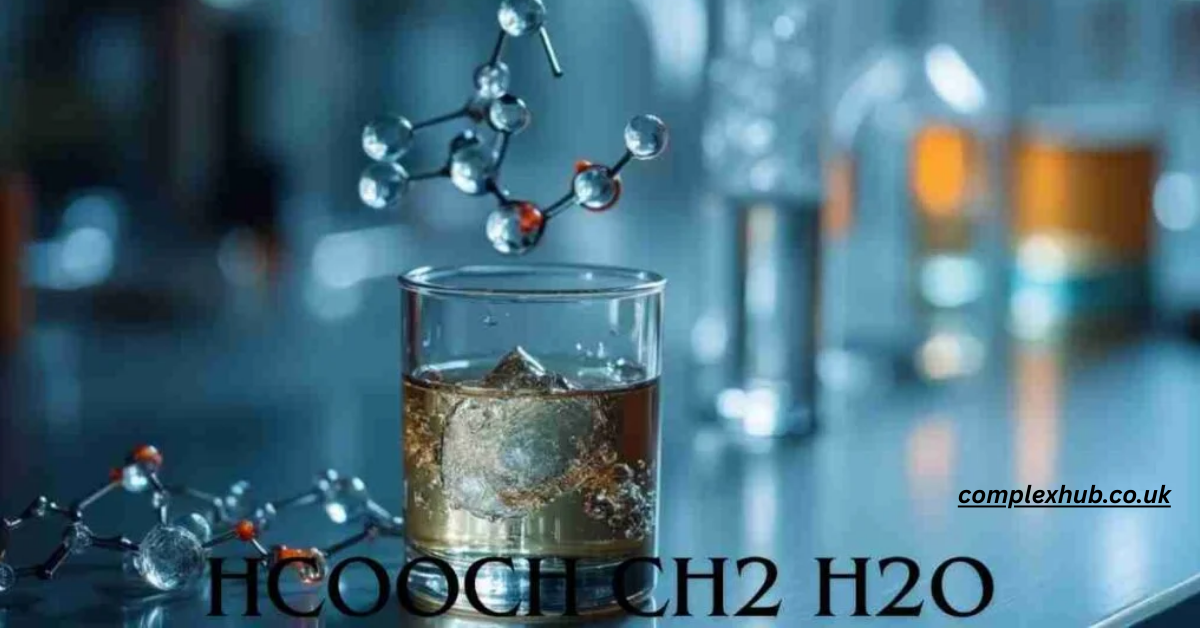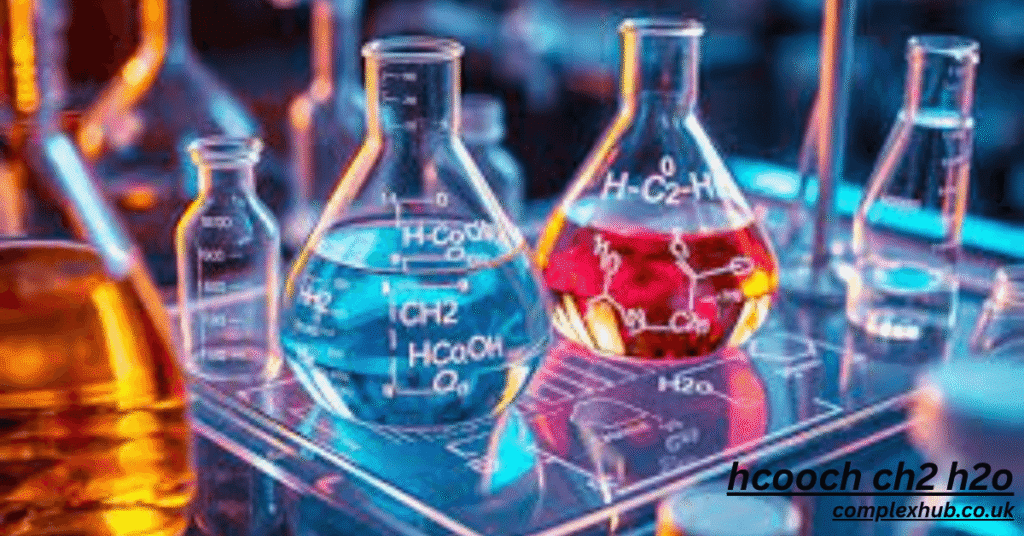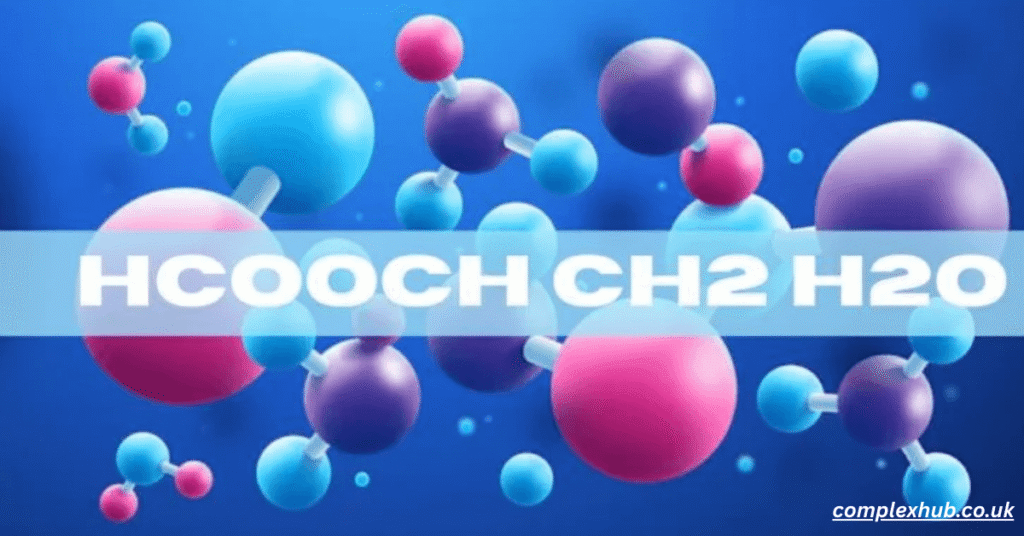
The reaction of methyl formate (HCOOCH₃) with water (H₂O) is a classic example of ester hydrolysis, resulting in the formation of formic acid (HCOOH) and methanol (CH₃OH):
HCOOCH₃ + H₂O → HCOOH + CH₃OH
This process exemplifies nucleophilic substitution, where water acts as a nucleophile, attacking the electrophilic carbon in the ester bond. Under acidic conditions, the carbonyl group of methyl formate becomes protonated, enhancing its reactivity and facilitating the cleavage of the ester bond.
HCOOCH CH₂ H₂O: Reaction Mechanism
The hydrolysis of methyl formate proceeds through several steps:
- Protonation of the Ester: An acid catalyst donates a proton to the carbonyl oxygen of methyl formate, increasing the electrophilicity of the carbonyl carbon.
- Nucleophilic Attack by Water: A water molecule attacks the protonated carbonyl carbon, forming a tetrahedral intermediate.
- Rearrangement and Bond Cleavage: Within the intermediate, a proton transfer occurs, facilitating the cleavage of the ester bond. This step releases methanol as a byproduct while leaving behind a protonated formic acid molecule.
- Deprotonation of Formic Acid: The protonated formic acid loses a proton, forming the stable product, formic acid.
This mechanism underscores the efficiency of catalytic acids in accelerating the reaction and ensuring high product yield.
Industrial Applications of Hydrolysis
The hydrolysis of methyl formate has significant industrial applications due to its ability to produce formic acid and methanol, two chemicals with broad utility.
Formic Acid Production
Formic acid, also known as methanoic acid, is widely used in various industries. Its applications range from leather processing and textile dyeing to agriculture, where it serves as a preservative and antibacterial agent. The simplicity and efficiency of methyl formate hydrolysis make it a preferred method for producing formic acid at an industrial scale.
Methanol Production
Methanol is a highly versatile chemical with applications in fuel production, chemical synthesis, and as a solvent. It is a critical precursor for the manufacturing of formaldehyde, acetic acid, and various plastics. Methanol’s role in clean energy, particularly in fuel cells, underscores its growing importance in global markets.

Factors Influencing the Reaction
Several factors influence the hydrolysis of methyl formate, affecting both the reaction rate and yield:
Catalysts
Acidic catalysts, such as sulfuric acid, are commonly used to accelerate the reaction. They work by protonating the ester, increasing its reactivity.
Temperature
Higher temperatures provide the energy needed to overcome activation barriers, resulting in faster reaction rates. However, excessive heat can lead to unwanted side reactions, making temperature control essential.
Water Availability
Using an excess of water helps drive the reaction towards product formation. According to Le Chatelier’s principle, removing one of the products, such as methanol, also shifts the equilibrium to favor the reaction’s completion.
Reaction Environment
The choice between acidic and basic conditions significantly affects the reaction’s efficiency and byproducts. Acidic hydrolysis is typically preferred due to its simplicity and cleaner product separation.
HCOOCH CH₂ H₂O Safety Considerations
Handling the reactants and products of methyl formate hydrolysis requires careful attention to safety protocols. Methyl formate is highly flammable and can be toxic if inhaled or ingested.
Formic acid is corrosive and can cause severe skin burns or eye damage. Methanol is also toxic and flammable, with potential health risks from exposure. Proper storage, personal protective equipment (PPE), and ventilation are essential to ensure safe handling and prevent accidents.
Significance in Organic Chemistry
The hydrolysis of methyl formate is a model reaction in organic chemistry, illustrating key concepts such as nucleophilic substitution and equilibrium dynamics. It serves as a foundational reaction for understanding ester chemistry and the role of catalysts in facilitating bond-breaking processes. The reaction’s relevance extends beyond the laboratory, offering practical insights into industrial-scale chemical production.

Conclusion
The hydrolysis of methyl formate into formic acid and methanol is more than just a chemical reaction. It represents a critical process with wide-ranging applications in industrial chemistry and beyond.
Understanding the reaction mechanism, optimizing conditions, and ensuring safe practices enable efficient production of these valuable compounds. Whether in the laboratory or in large-scale production, this reaction continues to showcase the power of chemistry in solving real-world challenges.
Frequently Asked Questions
1. What is the chemical equation for the hydrolysis of methyl formate?
The hydrolysis of methyl formate is represented as:
HCOOCH₃ + H₂O → HCOOH + CH₃OH
This reaction produces formic acid (HCOOH) and methanol (CH₃OH).
2. What is methyl formate used for?
Methyl formate is commonly used as a solvent, a precursor in chemical synthesis, and in the manufacture of formic acid and methanol. It is also used in the production of pharmaceuticals and pesticides.
3. What conditions are required for the hydrolysis of methyl formate?
The hydrolysis typically occurs under acidic or basic conditions. Acidic hydrolysis, using catalysts like sulfuric acid, is more common in industrial settings. It also requires water and controlled temperatures to optimize the reaction.
4. Is the hydrolysis of methyl formate reversible?
Yes, the reaction is reversible. However, it can be driven to completion by using an excess of water or by continuously removing one of the products, such as methanol, from the reaction mixture.
5. What safety precautions should be taken when handling the reactants and products of this reaction?
Proper storage, use of personal protective equipment (PPE), and adequate ventilation are essential. Methyl formate is flammable and toxic, formic acid is corrosive, and methanol is toxic and flammable. Adhering to safety protocols is crucial to prevent accidents.





